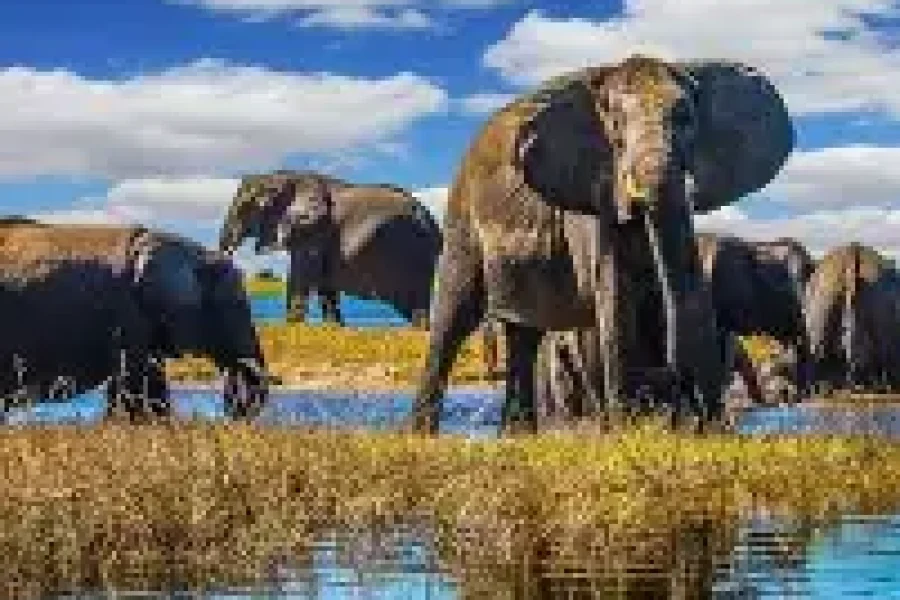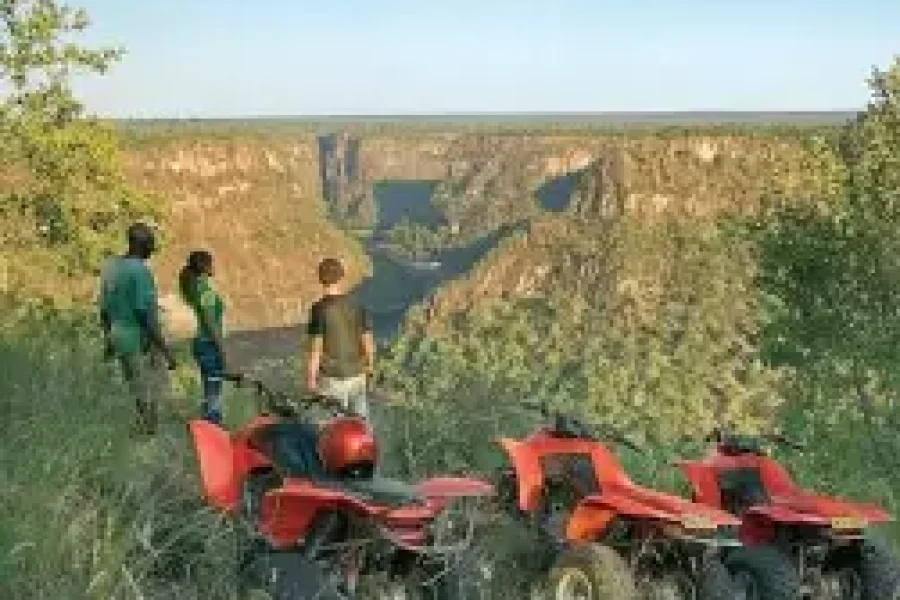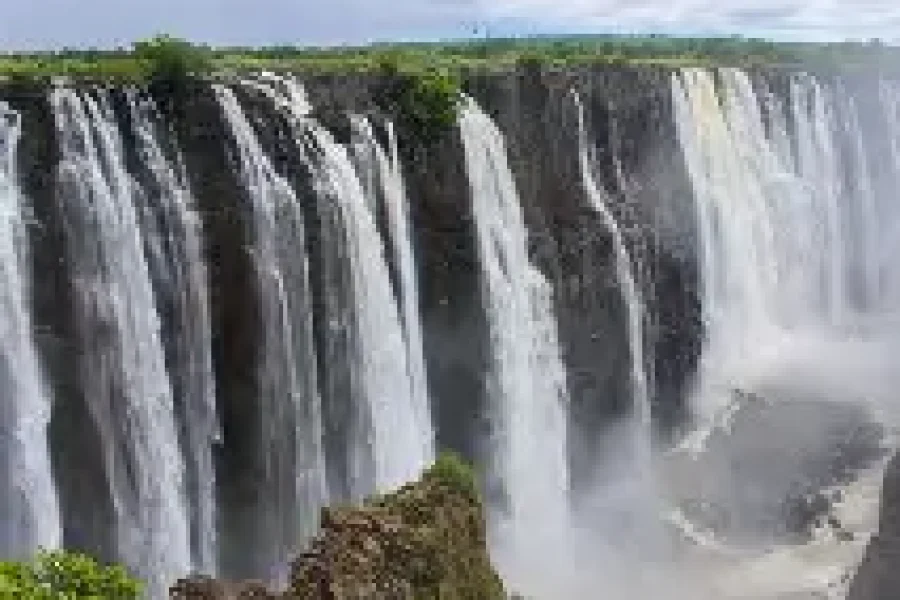Best African Safaris & Travel Services – African Authentic Safaris Ltd
Zambian Cultural Tour from Livingstone
from 0 review
Day Trip
Daily Tour
Unlimited
___
Description
Immerse yourself in the rich tapestry of Zambian heritage with our comprehensive Zambian Cultural Tour from Livingstone. This captivating half-day journey takes you beyond the typical tourist attractions to experience the authentic heart and soul of Zambia’s vibrant cultures and traditions. Beginning in Livingstone, the tourism capital of Zambia, this carefully crafted experience combines visits to significant historical sites, bustling local markets, and traditional villages where age-old customs continue to thrive. Led by knowledgeable local guides who provide insightful narratives on Zambian history, tribal customs, and contemporary life, you’ll gain a deeper appreciation for this diverse nation’s cultural identity. Perfect for travelers seeking genuine cultural immersion, this tour offers respectful interactions with local communities, opportunities to witness traditional craftsmanship, and insights into the everyday life of Zambians. Whether you’re a history enthusiast, cultural explorer, or simply curious about authentic Zambian lifestyles, this tour provides the perfect complement to your Victoria Falls adventure, creating a balanced experience that honors both Zambia’s natural wonders and its rich cultural heritage.
Highlights
- Livingstone Museum exploration with extensive collections of David Livingstone’s personal artifacts and Zambia’s cultural heritage
- Traditional village visit offering authentic insights into rural Zambian life and customs
- Vibrant market experiences at both Maramba Market (local produce) and Mukuni Curio Market (handicrafts)
- Cultural performances showcasing traditional Zambian music, dance, and storytelling
- Craft demonstrations by skilled local artisans working with wood, fabric, and beadwork
- Colonial architecture tour of Livingstone’s historic buildings dating from the early 20th century
- Interactive cultural experiences including traditional food preparation demonstrations
- Sustainable tourism practices that directly benefit local communities through fair compensation
- Small group format ensuring personal attention and meaningful cultural exchanges
- Expert cultural interpretation from guides with deep knowledge of Zambian traditions and history
Detailed program
Half-Day Cultural Immersion
Your cultural journey begins with a convenient morning pickup from your Livingstone accommodation by your knowledgeable local guide. The first stop is the historic Livingstone Museum, Zambia’s oldest museum, where you’ll discover fascinating exhibits on the country’s natural and cultural heritage alongside an impressive collection of David Livingstone’s personal artifacts including journals, photographs, and expedition equipment. After gaining historical context, you’ll proceed to the vibrant Maramba Market, the largest local market in Livingstone, where everyday Zambians shop for fresh produce, household goods, and colorful “chitenge” fabrics. Your guide will help navigate this bustling marketplace, explaining traditional foods and daily customs while providing opportunities to interact respectfully with local vendors. The journey continues to a traditional village where community members welcome you with song and dance performances before demonstrating aspects of daily rural life including traditional housing construction, food preparation, and craft production. Skilled artisans showcase their talents in wood carving, basket weaving, and pottery making, with opportunities to try these techniques yourself. The tour concludes with a visit to Mukuni Curio Market where you can practice bargaining skills while purchasing authentic handcrafted souvenirs directly from artisans before returning to your accommodation with newfound appreciation for Zambia’s rich cultural heritage.
- Hotel pickup and drop-off from all Livingstone accommodations
- Entrance fees to Livingstone Museum
- Traditional village visit with cultural performance
- Market tours (Maramba Market and Mukuni Curio Market)
- Cultural demonstrations and craft workshops
- Community levy supporting local development projects
- Traditional refreshment sampling
- Bottled water throughout the tour
- Small group experience (maximum 10 travelers)
- Photography opportunities (with respectful guidelines provided)
- Informational materials about Zambian culture and history
- Air-conditioned transportation between sites
- Local guide gratuities
- Personal purchases and souvenirs
- Professional photography services
- Optional visit to Railway Museum (additional fee applies)
- Specialized craft workshops beyond introductory demonstrations
- Full traditional meals (light tastings included)
- Alcoholic beverages
- Premium cultural performances beyond standard welcome
- Custom private tours outside standard itinerary
- Foreign language guides (other than English)
- Extended village homestay experiences
- Special event access (seasonal ceremonies require separate arrangements)
- Professional videography permits
- Specialized academic or research-focused interpretation
- Custom pickup or drop-off outside Livingstone area
Tour's Location
Is the traditional village visit an authentic experience or staged for tourists?
The village visit offers a balanced authentic experience that respects both visitors’ interests and community integrity. We partner with established villages that maintain traditional practices while selectively opening portions of their community to visitors. While the welcome performances are organized for tourists, they feature genuine traditional dances and music that community members regularly perform for their own celebrations. You’ll interact with actual residents going about modified versions of their daily activities rather than actors. The crafts demonstrated are traditional skills passed through generations, and artisans sell products they create for both tourist and local markets. Community members receive fair compensation for their time and knowledge sharing. We maintain long-term relationships with specific villages, rotating visits to prevent tourism fatigue and ensuring benefits distribute throughout the community through a transparent revenue-sharing model. This approach provides authentic cultural insights while respecting private aspects of community life.
What’s the best time of day for the Zambian Cultural Tour from Livingstone?
Morning departures (8:00-9:00 AM) typically offer the optimal experience for several reasons. Morning hours provide comfortable temperatures, especially during hot seasons (September-November), when afternoon heat can exceed 95°F/35°C. The Maramba Market reaches peak activity mid-morning when produce is freshest and most villagers are conducting their daily shopping. Traditional villages are most active during morning hours when many cultural practices and daily activities occur, including food preparation, crafting, and community work projects. Photography conditions are also superior with softer morning light that beautifully illuminates cultural demonstrations and architectural details. For travelers with afternoon Victoria Falls tours or adventure activities, morning cultural tours provide perfect complementary scheduling. That said, we offer afternoon departures (2:00 PM) during peak season, which work well during cooler months (May-August) and provide different perspectives on community life as residents transition to evening activities and return from agricultural work.
How physically demanding is the Zambian Cultural Tour?
The Zambian Cultural Tour is designed to be accessible for most travelers with moderate mobility. The experience involves approximately 1-2 miles (1.5-3 km) of total walking, broken into smaller segments throughout the half-day. Walking surfaces vary from paved pathways at the Livingstone Museum to packed dirt paths in villages and sometimes uneven ground at market areas. The pace is leisurely with frequent stops for explanations and cultural demonstrations, allowing ample rest opportunities. No stairs are required at main sites, though optional areas in the museum have 3-5 steps with railings. Most participants ranging from children to seniors find the physical requirements manageable. For visitors with mobility concerns, we can modify the route and provide seating at demonstration areas. The tour is conducted in air-conditioned vehicles between sites, with no segment requiring more than 20 minutes of continuous walking. We recommend comfortable walking shoes, sun protection, and carrying water (though bottled water is provided).
How does this tour benefit the local communities we visit?
Our Zambian Cultural Tour implements a comprehensive community benefit model developed in partnership with village leadership and local NGOs. For each visitor, a direct community levy (included in your tour price) contributes to a transparent village development fund managed by community committees, supporting education, healthcare, and infrastructure projects. Additionally, we pay fair-market compensation to all demonstrators, performers, and community hosts based on rates established through collective agreements rather than individual bargaining. The craft market visits are structured to support artisans directly, with guides trained to explain fair pricing that respects artisans’ skills while avoiding exploitative bargaining. Our company employs exclusively local guides and drivers, providing stable employment with above-market wages and career development. We maintain a 90% local procurement policy, purchasing supplies and refreshments from community-based businesses. Long-term commitments to specific communities ensure sustained benefits rather than extractive relationships, with annual impact assessments conducted by independent evaluators to measure both economic and social outcomes.
What should I wear and bring for the Zambian Cultural Tour?
Dress respectfully in lightweight, modest clothing that covers shoulders and knees as a sign of respect for traditional communities. Loose-fitting cotton garments in neutral colors are ideal for both comfort and cultural sensitivity. A wide-brimmed hat, sunglasses, and sunscreen are essential as some portions of the tour occur in unshaded areas, even during cooler months. Comfortable walking shoes with closed toes are recommended for varied terrain, especially in village areas where paths may be uneven. Bring a small backpack or cross-body bag to carry personal items while keeping hands free for interactive demonstrations and photography. While bottled water is provided, bringing your own reusable water bottle is appreciated to reduce plastic waste. If you plan to purchase handicrafts, bring cash in small denominations (US dollars or Zambian Kwacha), as credit card facilities are unavailable at traditional markets. A camera is highly recommended, though always ask permission before photographing individuals. Consider bringing a small notebook to record insights and a lightweight rain jacket during green season (November-April).
What makes Zambian cultural traditions distinct from other African countries?
Zambia’s cultural identity is uniquely shaped by its 72 recognized ethnic groups, each maintaining distinct traditions while sharing certain common values that create a distinctly Zambian character. Unlike countries dominated by one or two major ethnic groups, Zambia’s cultural mosaic features remarkable diversity while maintaining unusual harmony—a point of national pride. The Bemba, Tonga, Lozi, and Nyanja-Chewa represent major linguistic groups, each with distinctive musical traditions, ceremonial practices, and craft specializations you may encounter during the tour. Zambia’s traditional governance systems featuring chiefs and headmen remain vital alongside modern political structures, creating a functional dual system rarely seen elsewhere. The country’s relative political stability since independence has allowed for preservation of traditions that disappeared in regions experiencing prolonged conflict. Zambian craftsmanship is distinguished by intricate wood carvings, particularly the “stools of authority” and iconic figurines representing ancestors. The cultural influences of colonial history differ from neighboring countries, with unique British administrative approaches creating distinct urban development patterns visible in Livingstone’s architecture. Our guides highlight these distinctive elements throughout the tour while placing them in the broader context of African cultural heritage.
What type of cultural performances might we see during the village visit?
The cultural performances vary seasonally and according to which community groups are available, but typically include a selection of traditional expressions central to Zambian cultural identity. Most visits feature welcome dances combining rhythmic foot movements with call-and-response singing, often including the Makishi masked dance from Luvale traditions or Nyau brotherhood performances featuring elaborate costumes and symbolic movements. Traditional percussion ensembles demonstrate complex polyrhythms using instruments like the silimba (xylophone), kalumbu (single-stringed instrument), and various drums carved from specific tree types according to traditional knowledge. Storytelling segments share folk tales that transmit moral lessons and cultural values, often featuring mythological characters like Kalulu the trickster hare. During harvest seasons, you might witness agricultural celebration dances that thank ancestors for good yields. Special arrangements can sometimes include initiation ceremony dances (modified appropriately for visitors) or healing ritual demonstrations that showcase traditional spiritual practices. Every performance includes explanation of its cultural significance, the occasions when communities perform these traditions for themselves, and how these expressions have evolved while maintaining core elements. All performances are conducted with appropriate cultural permissions from community elders.
How does the tour address issues of cultural respect and avoiding exploitation?
Our approach to cultural tourism centers on dignity, reciprocity, and community agency through several established practices. Before developing any tour component, we conduct formal consultation processes with community leaders and obtain explicit permissions regarding which aspects of culture can be shared and which remain private. Communities establish their own visitor guidelines, which guides clearly communicate to guests before visits. Rather than treating culture as a commodity, we frame experiences as cultural exchange, encouraging appropriate questions and sharing while respecting boundaries. Guides receive specific training on facilitating respectful interactions and addressing problematic behaviors or questions from visitors. Photography policies are clearly established for each location, with some areas designated as photo-free zones out of respect for cultural beliefs or privacy. Our pricing model ensures communities receive fair compensation that values knowledge-sharing as skilled work rather than entertainment. We regularly reassess our practices through community feedback sessions and third-party cultural impact evaluations. Our company supports cultural preservation initiatives beyond tourism, including language documentation, traditional skills workshops for youth, and cultural archive development, ensuring that tourism becomes a tool for cultural sustainability rather than exploitation.
What will I learn about David Livingstone’s connection to Zambia during the tour?
The Livingstone Museum portion of the tour provides nuanced insights into David Livingstone’s complex legacy in Zambia. You’ll examine his original artifacts including letters, medical equipment, and expedition journals that document his 1855 “discovery” of Mosi-oa-Tunya (Victoria Falls)—though guides contextualize that local peoples had known and revered the falls for countless generations before European contact. The museum presents Livingstone’s multiple roles as missionary, doctor, explorer, and ultimately anti-slavery advocate through both his own writings and interpretive materials developed by Zambian historians. Our guides discuss how Livingstone’s activities laid groundwork for both colonial exploitation and certain positive developments in medicine and education, presenting balanced perspectives on his complicated historical impact. You’ll learn how Livingstone differed from many European contemporaries in his relatively respectful approach to local cultures and his documentation of sophisticated African societies that contradicted prevailing racist European attitudes. The tour addresses how modern Zambians view Livingstone’s legacy—from the renaming of the town in his honor to contemporary debates about colonial historical figures. This balanced approach neither demonizes nor glorifies Livingstone but presents him as a multidimensional historical figure whose actions had profound and mixed consequences for Zambia’s historical development.
Can this cultural tour be combined with other activities in a single day?
The half-day Zambian Cultural Tour integrates seamlessly with other Livingstone activities, creating well-balanced day itineraries. The most popular combination pairs our morning cultural tour (8:00 AM-12:30 PM) with afternoon Victoria Falls tours or sunset river cruises. This arrangement provides a perfect balance of cultural immersion and natural wonder. For active travelers, the afternoon quad biking or zipline adventures complement morning cultural experiences nicely. Photography enthusiasts particularly appreciate combining our cultural tour with early morning or late afternoon falls visits when lighting conditions are optimal for both experiences. During green season (November-April), combining the cultural tour with museum and market portions in morning hours followed by falls viewing in late afternoon maximizes outdoor time during clearer weather windows. For those interested in wildlife, our cultural morning pairs perfectly with afternoon safari drives in Mosi-oa-Tunya National Park. When booking multiple activities, we coordinate directly with other providers to optimize logistics and minimize transfer times. The cultural tour’s central Livingstone location means most combination activities require only 15-30 minutes of transfer time between experiences, maximizing your valuable vacation time while providing a more comprehensive understanding of both Zambia’s natural and cultural treasures.





Leave a review